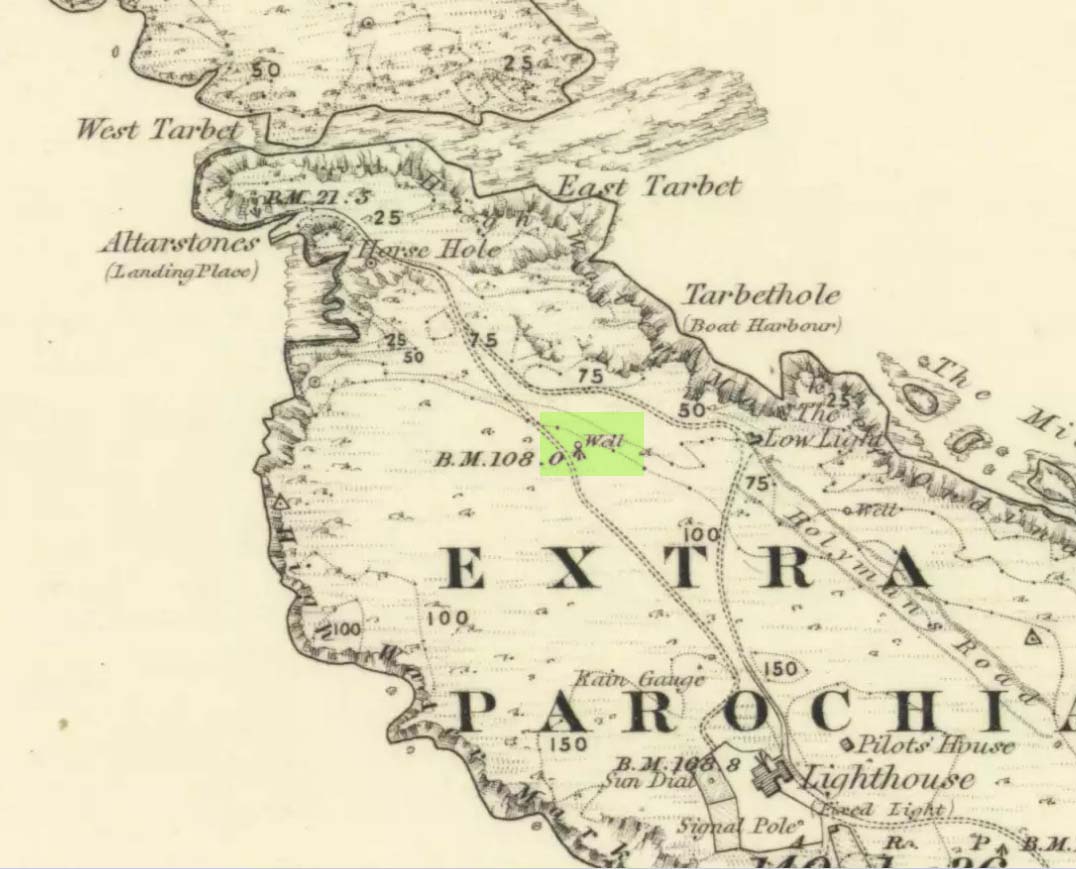Holy Well: OS Grid Reference – NT 8967 6600
- Archaeology & History

By the side of the stream known as St Andrew’s Burn, in the small wooded glen to the rear (west) of the Crosslaw Caravan Park (right by the side of the A1107 road), you can still find the flowing waters of this all-but-forgotten holy well that was dedicated to Scotland’s patron saint, god knows how long ago! The first description I’ve come across relating to the site is in William King’s (1858) early work on Coldingham Priory, where he told that,
“In a dean a little westward from the village, and on the border of the property of Bogangreen, is a spring of excellent water, called St Andrew’s Well, from which the monastery was supplied by leaden conduits, portions of which are occasionally turning up to view. These pipes are thick and well made.”
Fifty years later when Adam Thomson (1908) penned his magnum opus on Coldingham parish, the well was still in a good state of affairs. Hereby there grew much chamomile which, he thought, “the monks were wont to cultivate for the healing of the sick.”
Folklore
St Andrew’s feast day is November 30 and is known as Anermas.
References:
- Hunter, William K., History of the Priory of Coldingham, Sutherland & Knox: Edinburgh 1858.
- Morris, Ruth & Frank, Scottish Healing Wells, Alethea: Sandy 1982.
- Thomson, Adam, Coldingham: Parish and Priory, Craighead Brothers: Galashiels 1908.
Acknowledgements: Big thanks for use of the 1st Edition OS-maps, reproduced with the kind permission of the National Library of Scotland.
© Paul Bennett, The Northern Antiquarian
